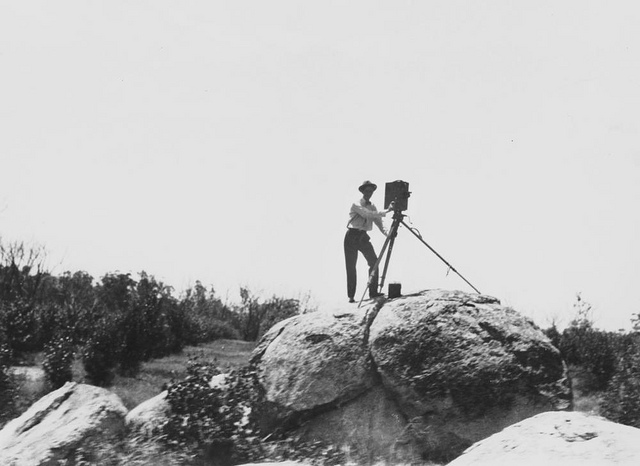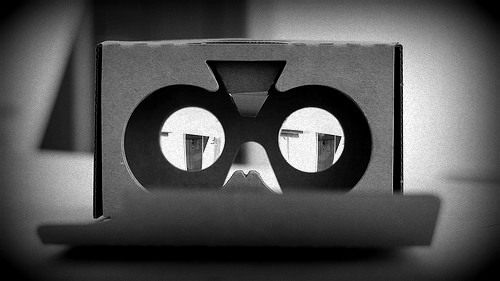 Friday, February 12, 2016
Friday, February 12, 2016 video is not the future, it's the now
A session at LGComms prompted a quick review of where video is for comms and PR people.
by Dan Slee
 video
video  sign up now for the comms2point0 weekly email. delivered once a week. straight into your inbox. guaranteed to be packed full of good stuff. absolutely no fluff.
sign up now for the comms2point0 weekly email. delivered once a week. straight into your inbox. guaranteed to be packed full of good stuff. absolutely no fluff.
 Friday, February 12, 2016
Friday, February 12, 2016 A session at LGComms prompted a quick review of where video is for comms and PR people.
by Dan Slee
 Monday, February 1, 2016
Monday, February 1, 2016  Ofcom, and they should know, tell us that 70 per cent of the UK adult population have smartphones and more than half watch short-form videos. As comms people spot the need to create short videos there are still things they need to remember argues one experienced comms person.
Ofcom, and they should know, tell us that 70 per cent of the UK adult population have smartphones and more than half watch short-form videos. As comms people spot the need to create short videos there are still things they need to remember argues one experienced comms person.
 Monday, December 21, 2015
Monday, December 21, 2015  There are huge numbers of people who like Star Wars as the launch of a new film in the franchise shows. So how would they react if a fire and rescue service used the force to deliver some safety messages? Rather well, it would appear.
There are huge numbers of people who like Star Wars as the launch of a new film in the franchise shows. So how would they react if a fire and rescue service used the force to deliver some safety messages? Rather well, it would appear.
by Mark Roberts
Kent Fire and Rescue Service is rethinking its approach to digital communications, with a new strategy already being worked on to coincide with the launch of a new campaign calendar for 2016/17.
As the resident sci-fi nerd in the Comms team, I managed to persuade the powers-that-be a Star Wars parody would be an interesting and fun way to do a smoke alarm safety message - which is often a hard sell due to audience complacency - capitalising on the huge exposure generated by the release of the new Star Wars film, The Force Awakens.
 Thursday, November 12, 2015
Thursday, November 12, 2015  For years virtual reality has been evolving with expensive headgear and clunky footage. But a powerful new New York Times film has signposted to a new era of story-telling that you can almost reach out and touch.
For years virtual reality has been evolving with expensive headgear and clunky footage. But a powerful new New York Times film has signposted to a new era of story-telling that you can almost reach out and touch.
By Dan Slee
It’s difficult to talk about virtual reality without sounding like I did when I was a kid the first time I watched a colour telly during the Moscow Olympics in 1980.
It was round at a friend’s house during a birthday party and athletes from Europe and Africa in multi-coloured vests were sprinting around a burnt red track.
“It looked so colourful,” I remember telling my Mum later. “Can we have one?”
We had been without a telly for two years and the images soaked into my television-starved mind. It would be another two before we did.
 Monday, October 5, 2015
Monday, October 5, 2015  As video grows in importance there's an ever changing debate about the role it will take and how comms people can use it. We’re launching this page as a place to make sense of it all which we’ll regularly update.
As video grows in importance there's an ever changing debate about the role it will take and how comms people can use it. We’re launching this page as a place to make sense of it all which we’ll regularly update.
Last update: January 7.
by Dan Slee
There’s no question that video is making a profound mark on communications.
While people are devouring video content on their smartphones most organisations are not even out of the starting blocks.
A few years ago, getting video onto the social web meant uploading to YouTube. Today, you can upload to YouTube + Facebook + Instagram + Twitter + Vine + Snapchat + Periscope + Meercat and a range of others.
We’ve collected together some resources that we think you’ll find helpful. We’ve put them into loosely into examples, strategy and tactics and as things develop we may change things around.
 video
video  Monday, August 24, 2015
Monday, August 24, 2015 
Making videos doesn't have to be an epic production as one communications officer discovered on one of our courses.
by Rob McCleary
My memories of making videos at University mainly involved me falling asleep in editing rooms whilst my colleagues did all the work. I always had more of an aptitude (and face) for radio so when I decided to get into video making for my council’s social media page I hopped on a train and headed to the comms2point0 video course only armed with my trusty iphone 4 and a sandwich.
The day long course started off with introductions from Steve from the Film Café whose CV includes working on Dr Who and Torchwood. Our first icebreaker task was, in pairs, to go out onto the distractingly pretty corridors of the Manchester Museum of Science and Industry and film each other talking about what we wanted to get out of the day.
 Friday, July 24, 2015
Friday, July 24, 2015  More than 70 per cent of the internet is predicted to be video by 2017. If you are a comms person it's a challenge you need toio have an answer to.
More than 70 per cent of the internet is predicted to be video by 2017. If you are a comms person it's a challenge you need toio have an answer to.
Online video is becoming more important all the time. There are an exciting and growing number of ways that we as organisations can use it, and ways that people can use it to engage with organisations.
Video is now big news on Facebook
In no time at all video has become huge on Facebook. Organisations need to adapt and take advantage of this. It is no longer enough to simply publish your video on YouTube, and share the YouTube link on Facebook.
 Monday, June 29, 2015
Monday, June 29, 2015  Video footage of good work far out at sea is helping to tell the story of the RNLI.
Video footage of good work far out at sea is helping to tell the story of the RNLI.
by Mike Rawlins
I volunteer as a Lifeboat Press Officer (LPO) for the RNLI at Macduff in Aberdeenshire where we have the only lifeboat in the RNLI that comes with its own truck and crane for launching, if that ever comes up in a pub quiz, you’ll ace it.
I have to say I have no affinity with the sea or seafaring blood in me, as far as I am aware. I’m from Manchester so the closest we ever got to the sea was the Manchester Ship Canal or Blackpool beach in summer. There was an incident with the pedalos at Weston Super-Mare in 1974 but that’s best forgotten.
 Friday, June 19, 2015
Friday, June 19, 2015  Video is becoming a skill that comms people can no longer ignore. To mark the launch of our new round of viodeo workshops we've set out some of the reasons we think that video will impact on your world.
Video is becoming a skill that comms people can no longer ignore. To mark the launch of our new round of viodeo workshops we've set out some of the reasons we think that video will impact on your world.
by Dan Slee
For a few months now I’ve been convinced that video is going to be absolutely essential for communications and PR people.
Throw a stone, it seems, and you come across forecasts, trends and predictions. Put them together and you create a powerful argument for video.
 video
video  Friday, May 22, 2015
Friday, May 22, 2015  Our first video workshop was a success. So we asked our man just how he got good and advice for people wanting to experiment but might be a bit wary.
Our first video workshop was a success. So we asked our man just how he got good and advice for people wanting to experiment but might be a bit wary.
I’ve made films for as long as I can remember. Honestly - I can't think of a time when I didn't shoot something for fun. I was lucky that there was always a camera in our house growing up and I was always allowed to play with it.
I was never afraid. I did forward rolls and pretended I was a stuntman, I burned train sets and pretended that melting plastic on the patio was a special effect, I even Duck Taped the camera to cars and got away with it.
 Sunday, April 26, 2015
Sunday, April 26, 2015  You may have already begun to hear the growing buzz around two relatively new mobile video apps. Well here is the brief overview of what they can do, how you can use them, and which one is best.
You may have already begun to hear the growing buzz around two relatively new mobile video apps. Well here is the brief overview of what they can do, how you can use them, and which one is best.
By Russ Gethings
What is Meerkat and Periscope?
Basically they are free live video streaming applications for your smartphone or tablet. (iOS only at the moment, although Android versions are in the works).
They allow you to instantly stream live video - of an event, or any happening, or even just yourself going about your day, and instantly notify your Twitter/Social media followers. In turn your followers can engage with each other and you during the live stream.
